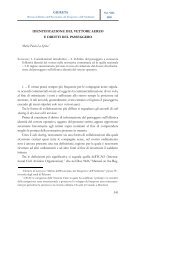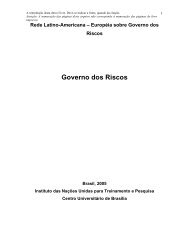Rome II and Tort Conflicts: A Missed Opportunity Abstract Contents
Rome II and Tort Conflicts: A Missed Opportunity Abstract Contents
Rome II and Tort Conflicts: A Missed Opportunity Abstract Contents
You also want an ePaper? Increase the reach of your titles
YUMPU automatically turns print PDFs into web optimized ePapers that Google loves.
SYMEON C. SYMEONIDES ROME <strong>II</strong> AND TORT CONFLICTS<br />
171<br />
example, road safety rules in the case of an accident.” The very fact that <strong>Rome</strong> <strong>II</strong><br />
contains a separate article dealing with these rules, is an oblique <strong>and</strong> grudging<br />
recognition of the distinction noted earlier between conduct-regulating rules <strong>and</strong> loss<br />
distributing tort rules.<br />
However, it is unclear whether this article is a true rule of choice-of-law rather<br />
than a mere evidentiary instruction about which facts are relevant in determining the<br />
172<br />
degree of the defendant’s culpability. Although the article’s wording clearly<br />
suggests the latter possibility, it is worth exploring whether the article is capable of<br />
being used as a choice-of-law rule, which can lead to applying, rather than merely<br />
“taking account” of the law of the conduct state in appropriate cases. If the answer is<br />
affirmative, then Article 17 can provide a flexible exception to all of <strong>Rome</strong> <strong>II</strong>’s<br />
articles that lead to a law other than that of the state of conduct, particularly: (a) the<br />
lex loci damni rule of Article 4(1) in conflicts arising from cross-border torts; <strong>and</strong> (b)<br />
the common-domicile rule of Article 4(2), in conflicts arising from intrastate torts.<br />
Unfortunately, there are several obstacles to transforming Article 17 into a true<br />
rule of choice-of-law. The first obstacle, which is not insurmountable, is that, despite<br />
173<br />
using the imperative “shall,” the article is entirely discretionary, as it should be. The<br />
second obstacle is that, under the article, the court need not apply the rules of safety<br />
<strong>and</strong> conduct, but may simply “take them into account.” Although the article itself does<br />
not preclude the application of these rules, the Explanatory Report suggests that this<br />
is precisely what was intended. It states that “[t]aking account of foreign law is not the<br />
same thing as applying it: the court will apply only the law that is applicable under the<br />
conflict rule, but it must take account of another law as a point of fact, for example<br />
when assessing the seriousness of the fault or the author’s good or bad faith for the<br />
174<br />
purposes of the measure of damages.” This statement, especially the italicized word<br />
“only,” seems to preclude the application of the safety <strong>and</strong> conduct rules of the<br />
175<br />
conduct state. The third obstacle is that these rules are to be taken into account “as<br />
a matter of fact” in “assessing the conduct” of the tortfeasor, a notion that echoes<br />
171. ROME <strong>II</strong>, recital (34) (emphasis added).<br />
172. For the concept of foreign law as “datum,” see Erik Jayme, Ausländische Rechtsregeln und<br />
Tatbest<strong>and</strong> inländischer Sachnormen—Betrachtungen zu Ehrenzweigs Datum-Theorie, in<br />
GEDÄCHTNISSCHRIFT FÜR EHRENZWEIG 35 (1976); Herma H. Kay, Conflict of Laws: Foreign<br />
Law as Datum, 53 CALIF. L. REV. 47 (1965).<br />
173. This is clear from both the legislative history <strong>and</strong> the phrase “in so far as appropriate” in art. 17,<br />
although that phrase also has a quantitative component.<br />
174. Explanatory Report, art. 13, p. 25 (emphasis added).<br />
175. The Report acknowledges the origin of Article 17 in, among others, Article 9 of the Hague<br />
Products Liability Convention, which does “not preclude consideration being given” to the rules<br />
of conduct <strong>and</strong> safety of the state of the product’s marketing. Despite this equivocal wording,<br />
however, the Explanatory Report of the Hague Convention states that a court could well apply<br />
the conduct rules of that state. See Willis Reese, Explanatory Report to the Hague Products<br />
Liability Convention, ACTS AND DOCUMENTS OF THE TWELFTH SESSION, v. <strong>II</strong>I, 251, 268 (1972).<br />
56 AMERICAN JOURNAL OF COMPARATIVE LAW (2008) PAGE 40 OF 46



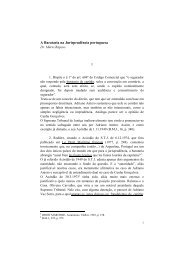

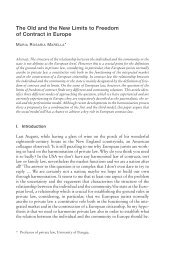

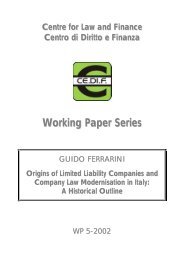
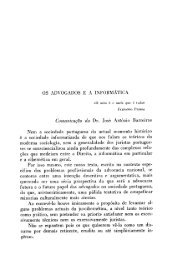
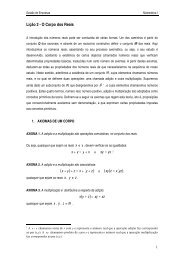
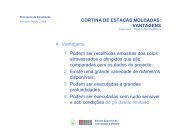
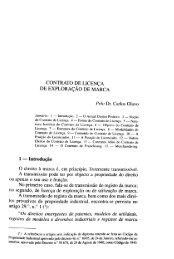
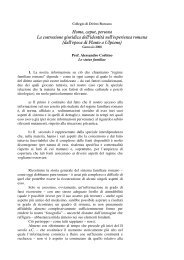
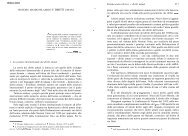
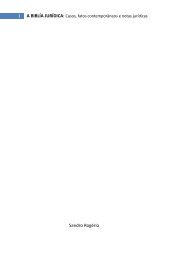
![Luigi Sapio Nozione di islām La parola “islām” [ ] è il mas.dar1 ...](https://img.yumpu.com/15836073/1/185x260/luigi-sapio-nozione-di-islam-la-parola-islam-e-il-masdar1-.jpg?quality=85)
